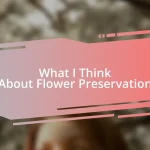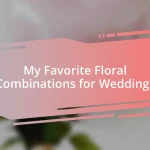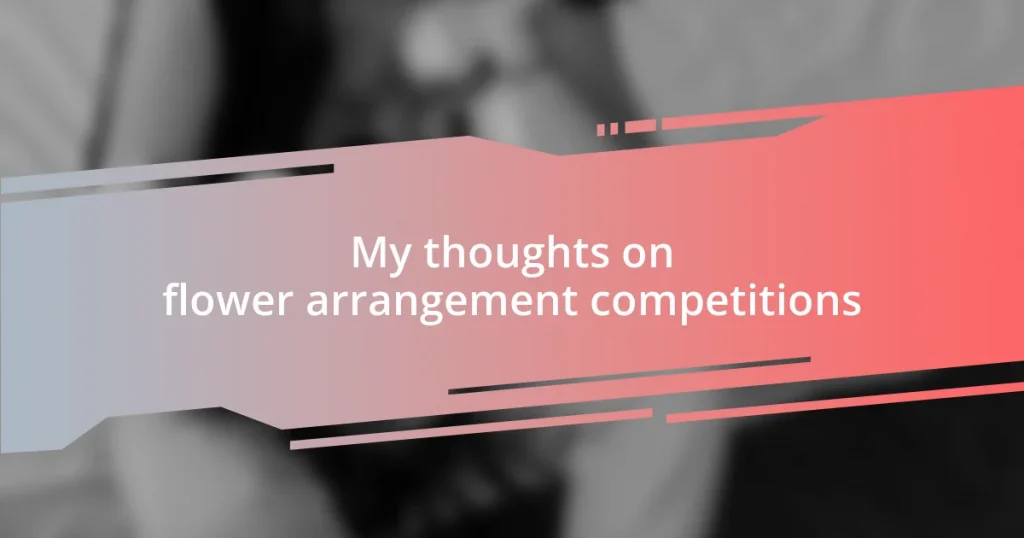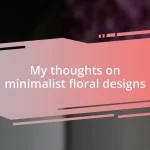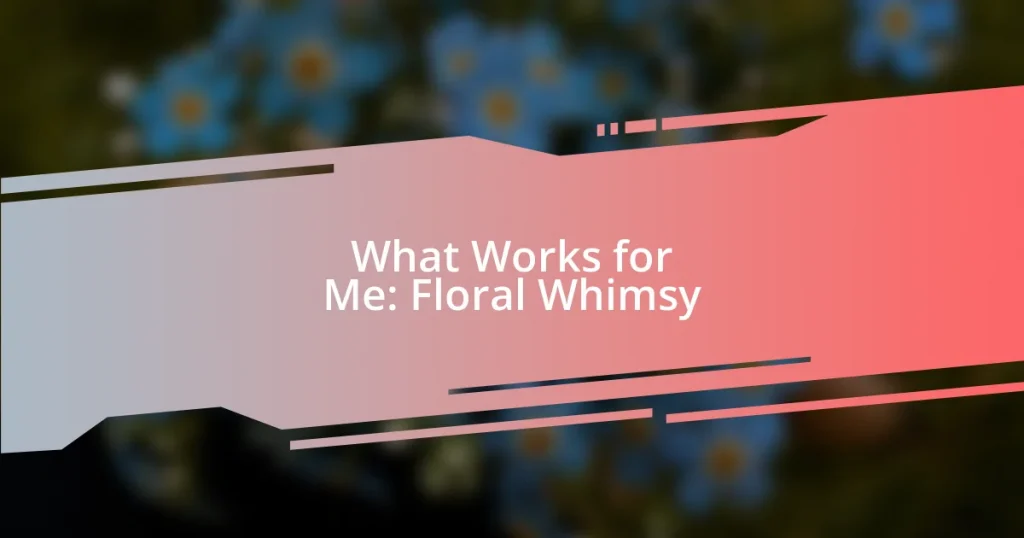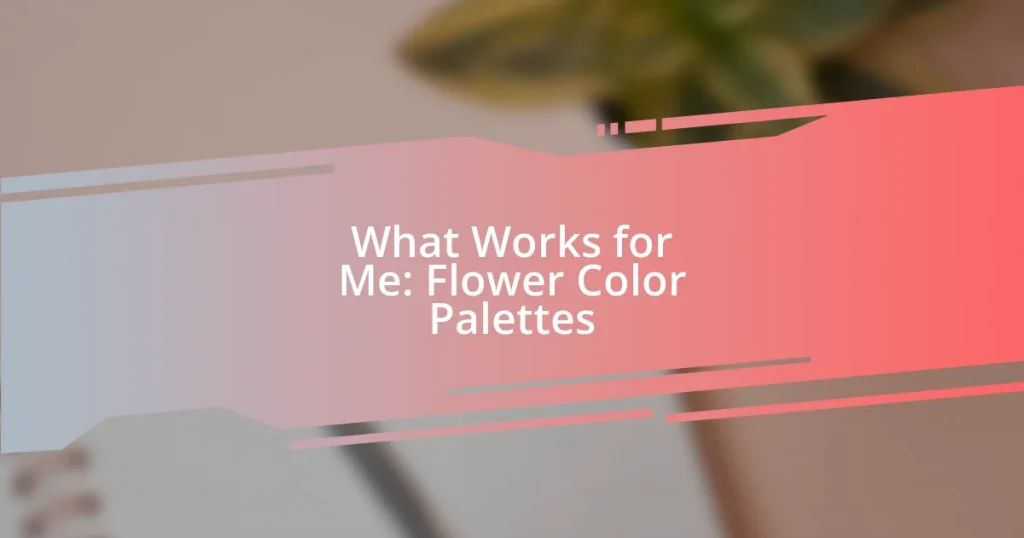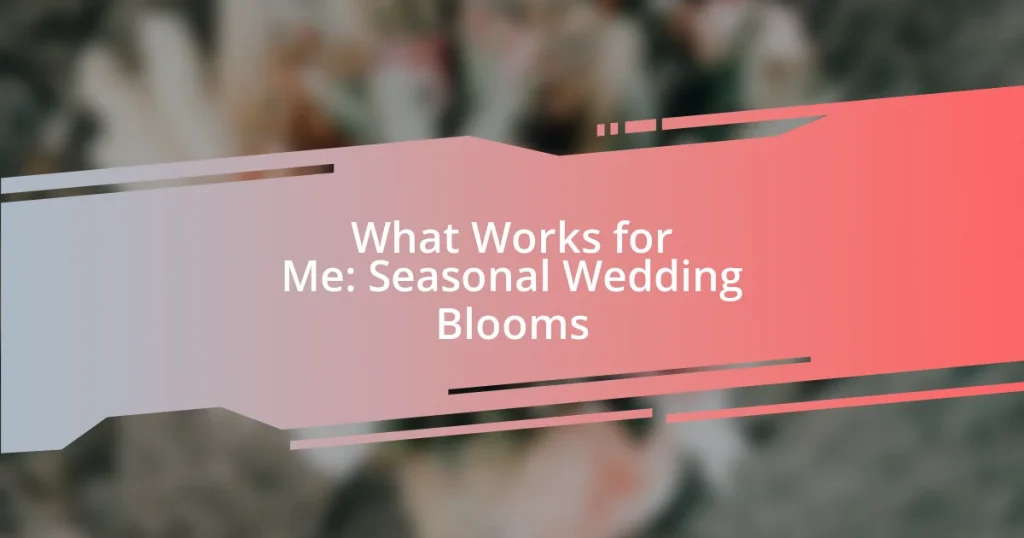Key takeaways:
- Flower arrangement competitions foster creativity, self-expression, and community among participants, highlighting both artistry and emotional narratives.
- Key skills for success include creativity, technical skills, time management, color theory, and adaptability, all crucial for crafting impressive arrangements.
- Judging criteria focus on originality, structural integrity, and presentation, emphasizing the importance of a stable and visually cohesive design.
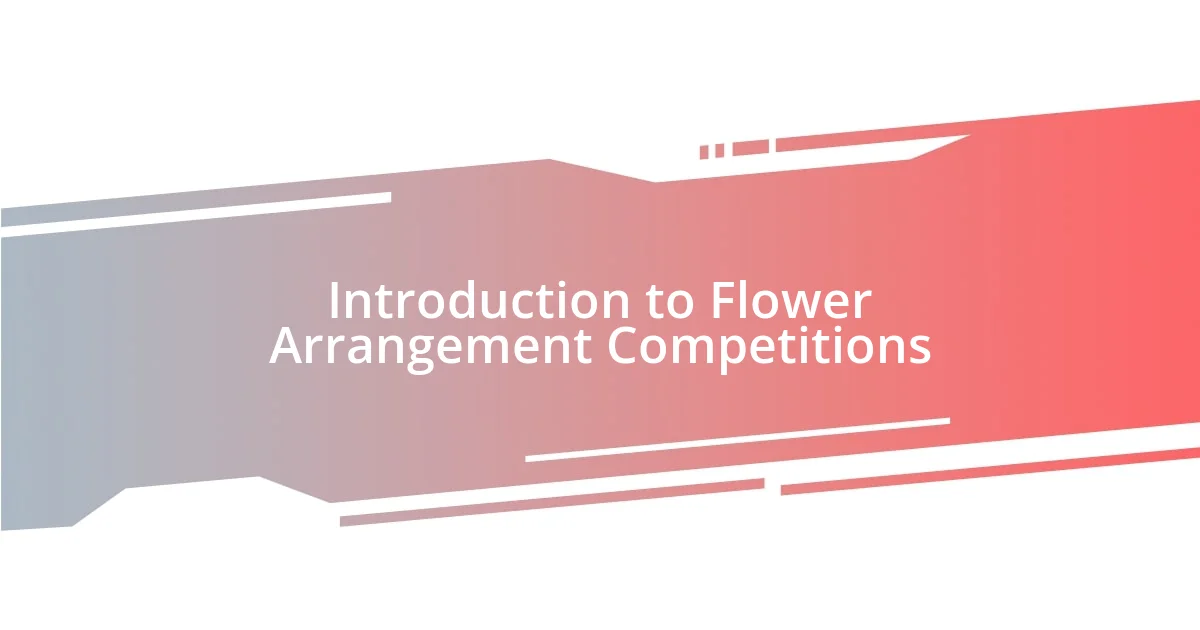
Introduction to Flower Arrangement Competitions
Flower arrangement competitions are a vibrant and fascinating realm where creativity blossoms. I remember my first encounter with such a contest; the atmosphere buzzed with anticipation as participants meticulously crafted their designs, each striving to outshine the others. Isn’t it incredible how something as simple as flowers can evoke such passion and artistry?
In these competitions, florists not only showcase their skills but also share their emotions through their arrangements. I once watched a contestant create a stunning piece that reflected her love for her grandmother, using her favorite blooms. It made me reflect: how do our personal stories influence the art we create? Flower arrangement competitions provide a unique platform for self-expression, allowing participants to tell their narratives through their floral designs.
At the heart of these contests lies a sense of community and camaraderie. While the competitive spirit can be intense, there’s also a shared respect among participants. I often find myself wondering how these events foster connections that go beyond the bouquets and centerpieces. Ultimately, flower arrangement competitions celebrate the union of artistry, emotion, and friendship in a way that truly honors the beauty of nature.

Benefits of Participating in Competitions
Participating in competitions can be remarkably beneficial for personal growth and skill enhancement. Each contest presents a chance to push one’s creative boundaries and learn from others. I vividly recall a moment from a local competition where a fellow entrant used an unconventional technique that completely transformed her floral arrangement. Watching her work made me realize how vital it is to remain open to new ideas and methods, ultimately inspiring me to experiment more in my own arrangements.
Here are some key advantages of joining these competitions:
- Skill Development: Competitions challenge you to refine your technique and expand your knowledge.
- Networking Opportunities: You meet fellow floral enthusiasts, which can lead to collaborations and friendships.
- Feedback and Critique: Judges offer professional insights that help you improve and evolve your style.
- Recognition: Winning or even participating can boost your visibility within the floral community.
- Inspiration: Exposing yourself to diverse styles and arrangements stimulates your creativity and innovation.
Being part of this vibrant community can be transformative, enhancing both your skills and your passion for the craft.

Key Skills Required for Success
The journey to success in flower arrangement competitions hinges on several essential skills. Creativity is perhaps the most apparent; I recall a time in a contest where a competitor used unexpected color combinations that immediately captivated the judges’ attention. It reinforced for me how thinking outside the box can truly set an arrangement apart. Beyond creativity, technical skills in floral mechanics—such as wiring, cutting, and arranging—are crucial. Each technique has its nuances, and mastering them can elevate an ordinary bouquet to something extraordinary.
Another key skill is time management, especially under competition pressure. I remember feeling overwhelmed by the countdown clock in one of my first events, and I quickly learned the importance of planning my arrangement steps ahead of time. Additionally, having a keen eye for color theory and design principles is invaluable in creating visually striking arrangements that flow harmoniously. There’s a sense of exhilarating focus that comes when I see everything come together, a feeling that solidifies my belief in the importance of these skills.
Lastly, adaptability can’t be overstated. In one competition, my initial design plan fell apart due to unforeseen circumstances, and I had to think quickly. I learned then that being flexible, whether it’s adjusting a design on the fly or dealing with unexpected materials, is essential for success in this vibrant field. Embracing this unpredictability allows florists to express their individuality while crafting arrangements that truly resonate with the audience.
| Key Skill | Importance |
|---|---|
| Creativity | Creates unique and memorable arrangements |
| Technical Skills | Refines mechanics and enhances overall quality |
| Time Management | Ensures completion before deadlines |
| Color Theory | Enhances visual appeal and harmony |
| Adaptability | Enables quick adjustments in designs |

Tips for Creating Unique Arrangements
When creating unique floral arrangements, I often turn to unexpected elements for inspiration. For instance, incorporating dried flowers or even seeds can introduce a new texture and visual interest. Have you ever thought about how a simple twig can elevate your arrangement? I once added some branches from my garden to a bouquet, and the judges loved that rustic touch—it brought the whole piece to life!
Another tip is to play with asymmetry in your designs. I remember a time when I ventured beyond the traditional balanced approach. I created a stunning piece with longer stems on one side and a cluster of blooms on the other. It added an exciting dynamic that drew in viewers and made them appreciate the arrangement from different angles. This outside-the-box thinking is particularly effective for competitions, where standing out is key.
Don’t shy away from the power of color psychology, either. Certain colors evoke specific emotions, and I’ve learned to leverage this in my arrangements. For instance, using vibrant oranges and yellows can create an energetic vibe, while soft blues and greens tend to bring calmness. I once crafted an arrangement aimed at invoking a sense of peace and tranquility, and the feedback was overwhelmingly positive. Understanding how colors impact emotions not only enhances the aesthetic of an arrangement but also deepens the connection with those who view it.

Judging Criteria in Competitions
Judging criteria in flower arrangement competitions can vary, but there are common elements that judges typically look for. In my experience, originality plays a massive role—judges often appreciate designs that showcase a florist’s unique vision. I once entered a competition where a judge praised an arrangement for its innovative use of neon colors that defied traditional expectations. This kind of boldness can definitely catch a judge’s eye.
Another significant aspect is the structural integrity of the arrangement. I remember crafting a piece that initially looked stunning, but when the judge pointed out the wobbly base, I realized how crucial stability can be. Ensuring that each flower and element is securely positioned not only reflects technical skill but also enhances the overall presentation. Have you ever been moved by how a well-placed bloom can elevate an arrangement? It’s those little details that matter.
Finally, presentation is key. A clean, cohesive look can make a big impact on judges. During one competition, I placed my arrangement in a subtly textured vase that complemented the flowers, rather than distracting from them. It was a simple choice, but it elevated the entire piece. This experience taught me that the overall impression is often what lingers in the judges’ minds, so it’s essential to think about how the arrangement is showcased.



